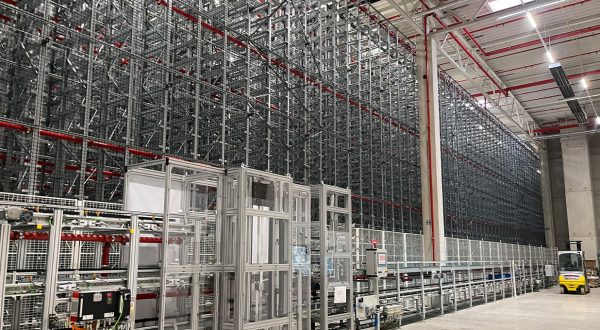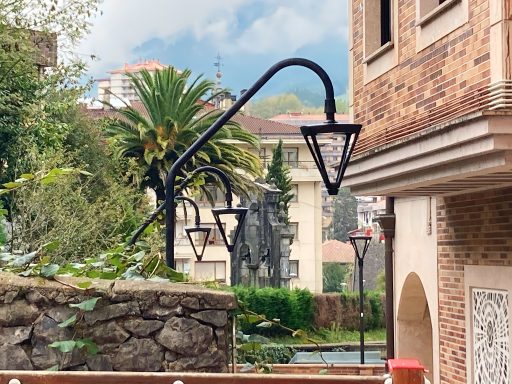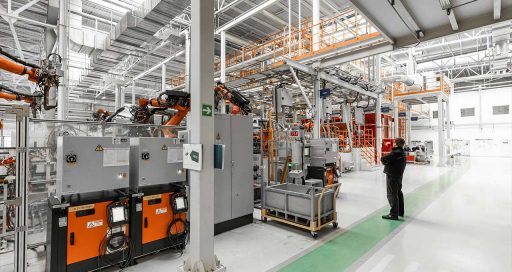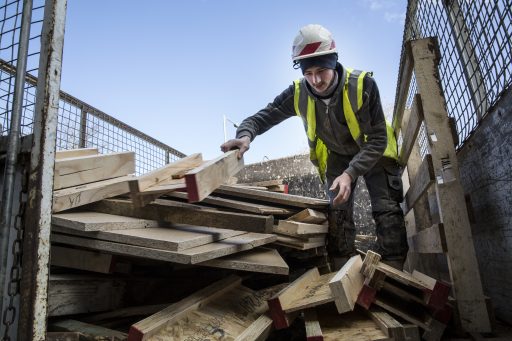Exoskeletons can be an effective tool against musculoskeletal problems in a number of business sectors. Take VINCI Facilities, whose technicians are now equipped with movement assistance devices where needed, with guaranteed benefits for workplace comfort.
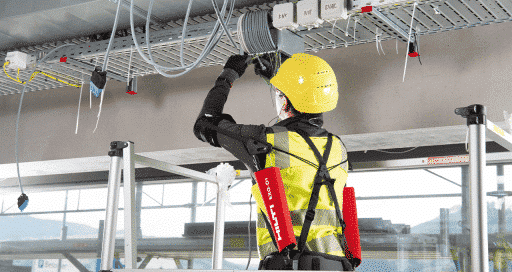
The Hilti EXO-O1 exoskeleton is particularly useful for technicians working on cable duct installations.
Early in 2021, the Hilti group, a construction technologies specialist, announced its first commercially available exoskeleton: the EXO-O1. A new version – EXO-S – available from May 2023 will be even stronger and adjustable to all body types. Designed to reduce the strain on joints when working with the arms above shoulder height, the device is particularly suitable for technicians working on cable runs and performing the repetitive tasks involved in fitting false ceilings.
EXO-O1 can reduce the maximum strain on the arm and shoulder muscles by up to 48%.
This is naturally of interest to a business unit like VINCI Facilities Contrats Nationaux Tertiaires, whose technicians work in businesses to maintain their HVAC (heating, ventilation and climate control) systems. “During preventive maintenance campaigns, our technicians have to work with false ceilings and perform tasks above shoulder height, which can lead to strain and pain in the back and shoulders”, says Sabrina Cieutat, Prevention and CSR Mission Manager at VINCI Energies France Facilities IdF Tertiaire. “At Vinci Energies, we have a strong culture of employee health and safety. That is why a business unit in our VINCI Facilities Contrats Nationaux Tertiaire division launched the project with Hilti to provide a solution for our preventive maintenance teams in the field”.
Load transfer
The device, weighing 1.9 kg and adjustable to any size, is worn like a backpack and suitable for long, repetitive tasks. It is easy to handle, unobtrusive, and does not impede the operator’s movement even when the arms are lowered – the user soon forgets they are wearing it. In short, tests were successful.
Hilti opted for a passive, i.e. non-motorised, exoskeleton, fitted with dampers, springs and bands capable of storing energy generated by the user’s movement.
The secret of this exoskeleton? It transfers load from the arms to the rest of the body, and the hips in particular. This helps the wearer to keep their spinal column straight when pushing. “The weight distribution offsets the technician’s efforts during repetitive maintenance tasks”, says Jaxsan Rasendran, Quality, Safety and Environment Engineer at VINCI Facilities. “This is one of the guiding principles in preventing musculoskeletal problems”.
According to Hilti, EXO-O1 can reduce the maximum strain on the arm and shoulder muscles by up to 48%.
But Hilti and VINCI Energies France Facilities IdF Tertiaire have no plans to halt their partnership at this high point. As Jaxsan Rasendran concludes, “Using feedback from the field, we continue to work together to innovate and continuously improve the tool”.
15/02/2023

